A pioneering artist once planted two acres of wheat in New York City as an act of rebellion. Now, a new field rises
Four decades after the artist Agnes Denes planted and harvested a two-acre wheat field in Lower Manhattan, using one of the last undeveloped plots of land in the economic capital to create an idyllic but ephemeral vista, the ecological artist — now aged 93 — has reimagined the project in Montana.
“Wheatfield – An Inspiration” marks the first time the Budapest-born, New York-based artist has planted a wheat field in the US since she spent that muggy summer in 1982 with a group of volunteers cleaning up a landfill in Battery Park City to make it tenable for rows of the golden crop to grow. It drew crowds and reporters — including CNN — and made for a striking view as the wheat flourished against the backdrop of the Twin Towers. Made as an act of rebellion, the beauty of the field was a call to reprioritize human values and incite change among world powers decades before the environmental crisis became a mainstream concern. (It has been restaged internationally, including in Milan in 2015, and at Art Basel in Switzerland this month, concurrently with the field in Montana.)
Out west, Denes hopes to plant seeds of community with the help of the project’s host, Tinworks, an arts organization in the rapidly developing city of Bozeman. Wheat may not be out of place in Montana, a top-producing state of the crop in the country’s agricultural heartland, but it is a reminder of the changing landscape as urban centers continue to sprawl outwards and food insecurity looms due to climate change.
“Wheat is wonderful — it sustains humanity and is probably the most planted food next to rice. It’s a good metaphor,” Denes said in a video call with CNN.
“The original ‘Wheatfield’ was a confrontation of people who run the world. I wanted leaders to rethink the use of land and the use of humanity,” she added. “This ‘Wheatfield’ is a totally different idea — to bring people together.”
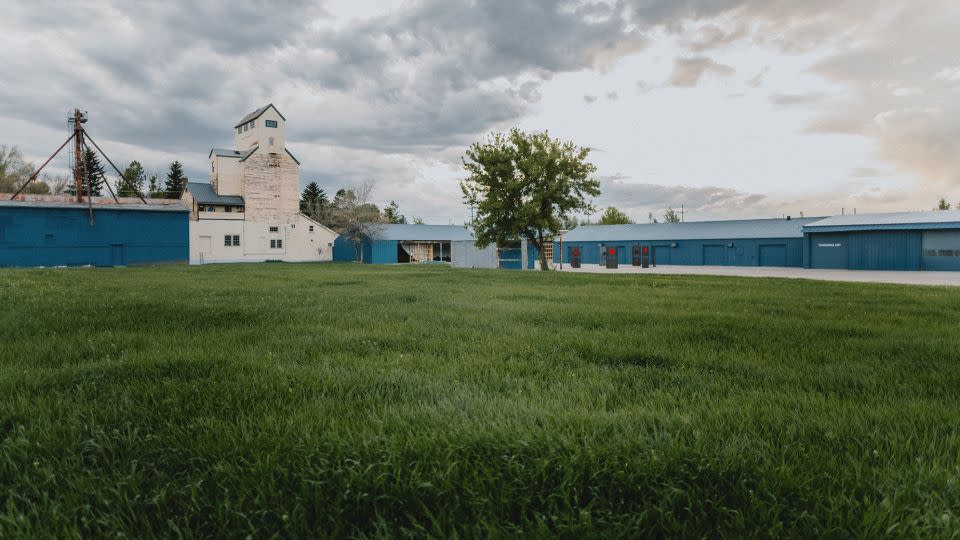
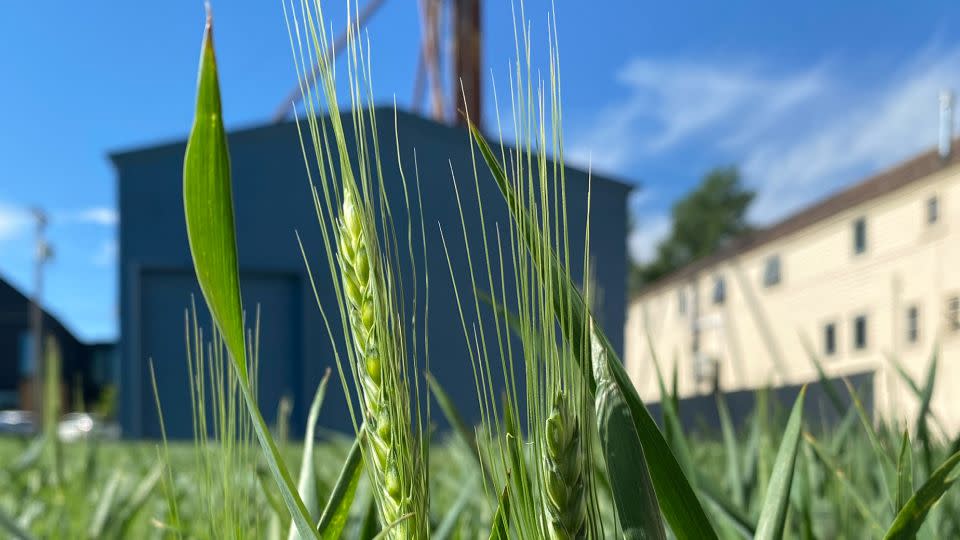
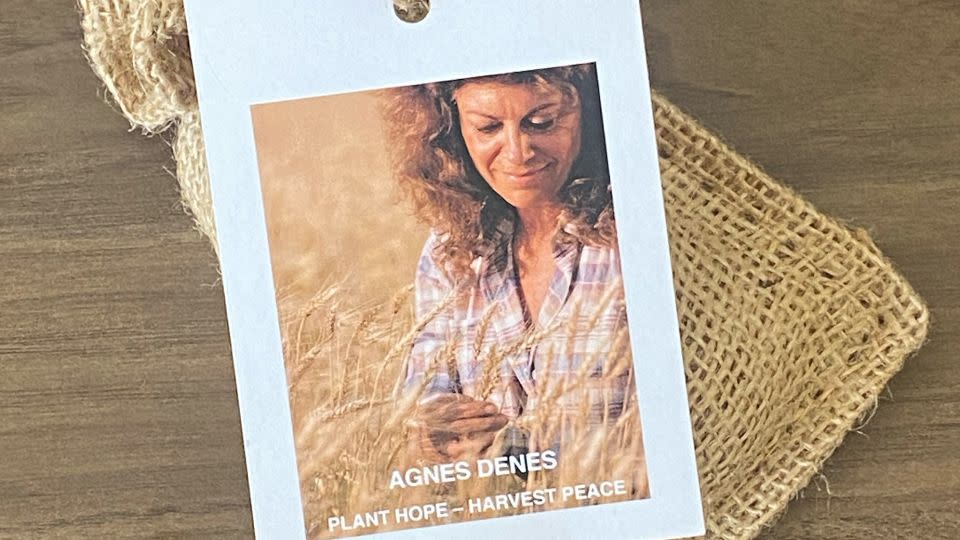
Denes and Tinworks are doing so in collaboration with Bozeman residents, students and small businesses. Last fall, around 50 volunteers cleaned up the site, a lot owned by Tinworks, and planted the winter wheat led by a local fifth-generation farmer, Kenny Van Dyke. They will tend the wheat by hand all summer until September, when students from Montana State University’s plant sciences department, which is also a partner on the project, will harvest the crop. Wheat will also be sprouting all around the city in solidarity with the project, thanks to some 200 packets of seeds Tinworks distributed to community members.
Come fall, local bakeries will use the resulting flour milled from the grain in their products, and will help keep regional food banks stocked, according to Tinworks director Jenny Moore.
“(‘Wheatfield’) is so timely, in terms of the issues that we’re facing with climate change, agricultural developments, food sustainability, food insecurity, the value of land and the loss of agricultural land in Bozeman,” Moore said in a call. “Understanding the presence and role of wheat in Montana both historically and presently, it just seemed like such a fantastic opportunity to ask Agnes if she would reconsider the work in (this) context.”
Though the wheat has successfully sprouted, unseasonably warm weather in December and January meant only scant snow for the winter crop, whose survival typically relies on several inches of coverage. At the time of the call with Moore in February, the field’s future seemed precarious.
“Perhaps I’d wished the weather wasn’t so much proving the point of what a crisis point we’re in,” she said.
Through land and time
Over her career, Denes has been a pioneering figure in ecological art, with concepts that strive to “unite the human intellect with the majesty of nature,” as she described in her collection of writings, “The Human Argument.” Her work is a call to action and, often, a warning, but always in service of demonstrating how art can help improve humanity.
The scale of her projects is often grand and complex. Take “Tree Mountain,” which involved planting 11,000 trees in a spiral formation in a gravel pit near Ylojarvi, Finland, in the 1990s. Embodying her fascination with mathematics in nature, structure and beauty, the form is based on the spiral of sunflower seeds, which follow the golden ratio. Each tree belongs to the person who planted it, an assertion of our shared responsibility over the stewardship of Earth
“They own it. The only thing is, they can’t sell it — no money is ever involved, but they can leave it to their children and their children’s children in perpetuity,” Denes explained. “So it becomes a family. The forest becomes a family connected by a tree.”
Many of her ideas are in this vein, with projects meant to establish conversations not only globally, but through vast stretches of time.
“I’m the most impractical person you ever want to meet,” she said. “And it never comes into question of how difficult it’s going to be… I know it’s practical, because it’s made for humanity.”
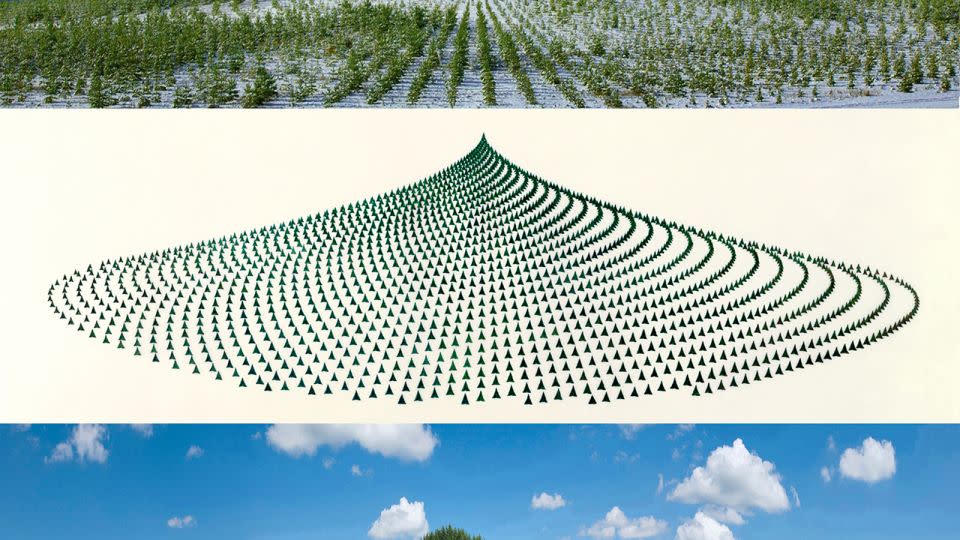
But though Denes has been extraordinarily prolific in her concepts and proposals — many of her some 200 ideas have been published in “The Human Argument” — she has only realized a fraction of them in her lifetime. The majority only be experienced through writings, schematics and models. They include her plan to bury time capsules containing information about our current civilization in Antarctica’s glaciers, to be carried out by the ocean in thousands of years’ time, or an early idea to create a silent, flying aircraft to understand the movements and behaviors of migrating birds.
“People know me finally — (but) after working 60 years or 70 years, they know me on three or four projects. That’s it,” she said. “Can you imagine if I could have realized 20 or 30?”
Sowing seeds for change
As with “Wheatfield,” seeds have often served as potent symbols for Denes. Her first noted work was a small, private performance in Sullivan County, New York, in 1968, which involved Denes planting rice seeds to signify life, chaining a series of trees together to represent decay, and burying a haiku to illustrate higher thinking — three concepts which exist in a triangularity, she asserted. Nine years later, she was invited to restage the performance at Artpark in Lewiston, where she planted a half-acre of rice on Niagara Gorge above the falls.
More recently, she exhibited the verdant “Living Pyramid” in Long Island, New York, in 2015; in Kassel, Germany, in 2017 for the international art show Documenta; and in Istanbul in 2022. Comprising rows of greenery that sloped upward into a vertiginous pyramid, the plants sprouted over the course of the exhibitions and were eventually given away to visitors. The artist has often returned to pyramids in her work as another vehicle for her ideas; a 17-foot model for her study of towering, luminescent “Crystal Pyramid,” meant to be a counterpart to Egypt’s stone-made wonders of the world, was shown at her retrospective at The Shed in New York from 2019-2020.
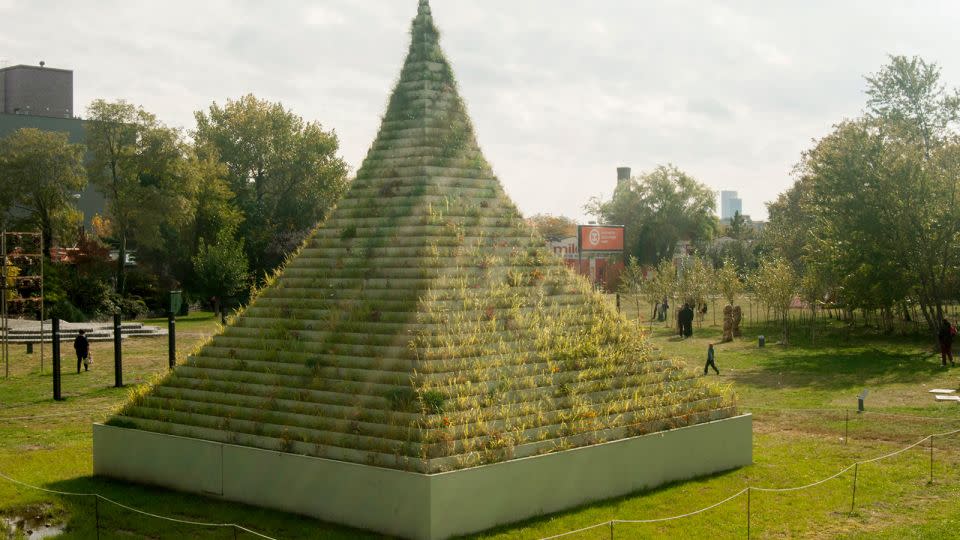
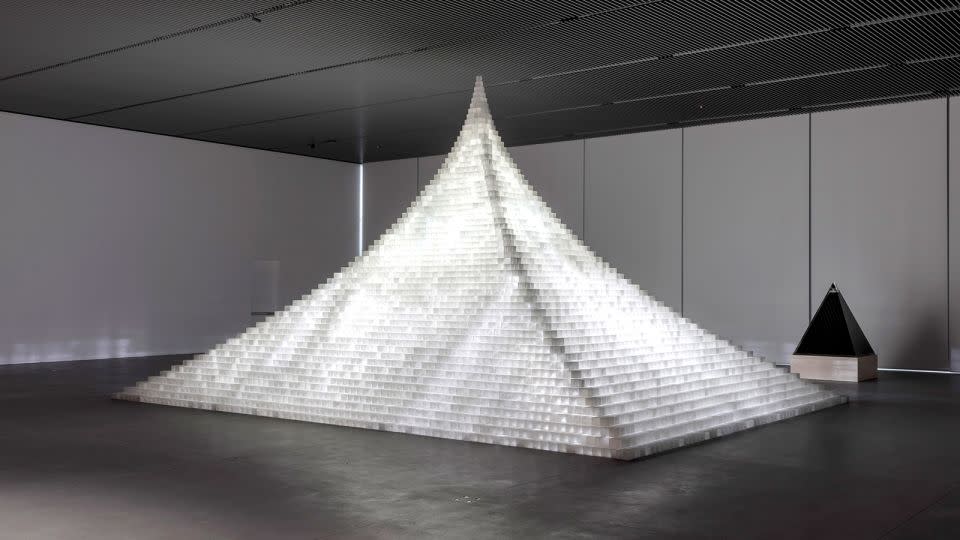
With “Wheatfield – An Inspiration,” like with all her work, Denes strives for nuance and to engender change through visitors and participants who take something meaningful from the work.
“There’s a lot of political art going on — useless, aggravating. I want to change people in the most subtle way possible,” she explained. “Let people sensitize themselves and believe in themselves — and that’s political. But… it’s not making people into enemies, or looking down on different people.”
Denes has left her mark in significant ways around the world, in messages buried deep in the earth and in the formations of forests architected as monuments to a more hopeful future. She is continuing the work even now, well into her nineties, looking for more of her projects to be approved — including a 117-acre forest in a landfill in Queens, New York, that she hopes she can bring to life, rather than lose the site to building developers. All, she hopes, will outlive her in some way, through their physicality or ideology.
“I’m planting ideas in the mind, as well as wheat,” she said of “Wheatfield.”
“Mining into minds takes a long time,” she added with a small laugh. “I’m a mind-miner.”
For more CNN news and newsletters create an account at CNN.com

